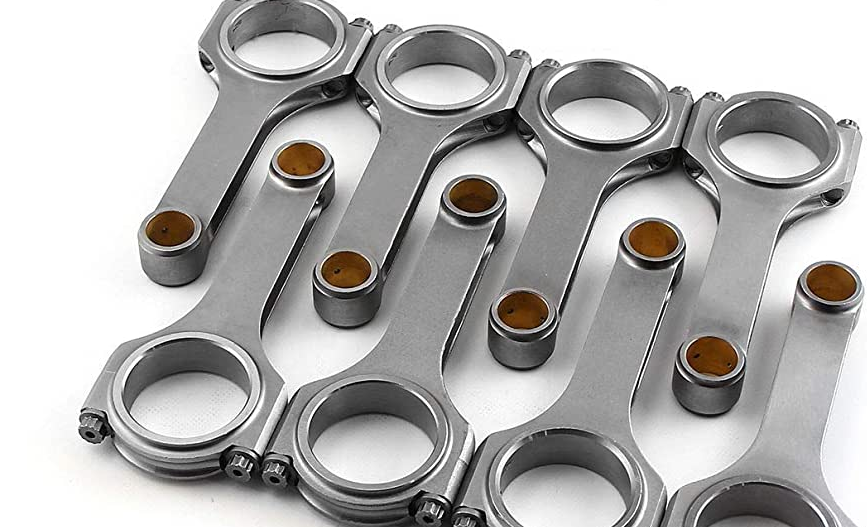Materials of a Connecting Rod
A connecting rod is a crucial component of an internal combustion engine. It is typically made of steel or aluminum alloys, and in some high-performance applications, it could be composed of titanium or even carbon fiber composites. The choice of material depends on the specific use case, performance requirements, cost considerations, and technological advancements in the field of materials science.

Understanding the Functionality of Connecting Rods
Connecting rods convert the reciprocating motion of the piston into the rotational motion of the crankshaft. This is an integral part of the engine’s operation and thus, the material used to construct the connecting rod is of high significance.
The material must be strong enough to handle intense pressures and temperatures, and yet light enough to minimize the weight of the engine. Steel and aluminum alloys are commonly chosen for their balance of strength, weight, and cost.
Comparing Steel and Aluminum Connecting Rods
Between steel and aluminum, each material has its advantages.
Steel connecting rods, often made from high-strength alloys like 4340 chromoly steel, are extremely durable and can withstand higher pressures and temperatures. However, they are heavier than their aluminum counterparts and thus can reduce the overall efficiency of the engine.
On the other hand, aluminum connecting rods, usually crafted from 7075-T6 aluminum alloy, are lighter and offer a higher strength-to-weight ratio. They absorb shock loads well and can contribute to a smoother running engine due to their inherent damping characteristics. However, they may not offer the same level of durability as steel.
The table below outlines some key differences:
| Steel Connecting Rods | Aluminum Connecting Rods | |
|---|---|---|
| Material | 4340 Chromoly Steel | 7075-T6 Aluminum Alloy |
| Weight | Heavy | Light |
| Strength | High | Moderate |
| Durability | High | Moderate to Low |
| Cost | High | Low to Moderate |
Titanium and Carbon Fiber Connecting Rods
For high-performance or racing applications, other materials like titanium or carbon fiber composites may be employed. Titanium connecting rods offer a superb strength-to-weight ratio, even better than that of aluminum. However, they are considerably more expensive and harder to machine than both steel and aluminum.
Carbon fiber composites are another choice for high-performance applications. They are lightweight, have a high strength-to-weight ratio, and exhibit excellent resistance to heat and corrosion. But similar to titanium, they also come with a high cost and require specialized production methods.
Final Thoughts on the Material of Connecting Rods
In conclusion, the choice of material for a connecting rod depends on several factors, including its intended application, required strength, weight considerations, and cost. As technology and materials science continue to advance, new materials or alloys may emerge that could further enhance the performance and efficiency of engines. But for now, steel, aluminum, titanium, and carbon fiber composite remain the primary choices for the construction of connecting rods.